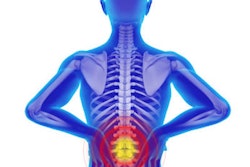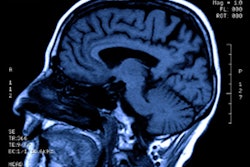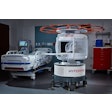
The odds of a patient receiving a referral for an inappropriate MRI scan are 26% higher when the patient is referred by a hospital-based primary care physician compared with a doctor in private practice, according to a study published May 3 in Health Affairs.
The results suggest that concerns about the influence of hospital-based employment on patient care are valid, wrote a team led by Gary Young, PhD, of Northeastern University in Boston.
"The odds of a patient receiving an inappropriate MRI referral increased by more than 20% after a physician transitioned to hospital employment," Young and colleagues wrote. "Most patients who received an MRI referral by an employed physician obtained the procedure at the hospital where the referring physician was employed. These results point to hospital-physician integration as a potential driver of low-value care."
In the traditional healthcare model, physicians have cared for patients through private practices, securing affiliation with a nearby hospital in order to provide inpatient services. But this care model has begun to shift, and physicians are now more and more likely to be employed directly by a hospital. The trend can translate to better patient care, but it can also lead to ordering inappropriate services to boost the hospital's bottom line.
"[As] hospital employees, physicians may be more inclined to refer patients for services that financially benefit the hospital that employs them but that might not be clinically beneficial for patients," the authors noted. "Some studies point to such an effect, finding that physicians employed in hospital-based arrangements have relatively more expensive patterns of patient care."
Yet despite some evidence of "more expensive patterns of patient care" among hospital-employed physicians, these studies don't necessarily settle the question of whether that care is inappropriate.
To shed light on this issue, Young's group investigated the impact of hospital employment of primary care physicians on inappropriate imaging, specifically MRI for lower back pain and nontraumatic knee and shoulder pain without joint effusion. The team chose to study these particular conditions because well-established guidelines are available, particularly from the American College of Radiology (ACR), to determine when imaging is appropriate.
For identifying the location of service and referrals to MRI, Young's team used Current Procedural Terminology (CPT) codes and information from the Massachusetts All Payer Claims Database between 2009 and 2016. For physician employment data, the group used Medicare claims information and information from large health plans in Massachusetts from the same time frame.
The study included 583 primary care physicians who shifted to hospital employment during the study period, as well as a control group of 3,102 physicians not employed by a hospital during the same period.
The investigators found that the odds of a patient receiving an MRI referral increased by 34% after a physician transitioned to hospital employment, and the odds of receiving an inappropriate referral by 26%.
| Odds ratios for overall and inappropriate MRI referrals by hospital employment | ||||
| Overall MRI referrals | Inappropriate MRI referrals | |||
| Employment type | Hospital-employed physicians + control group | Hospital-employed physicians | Hospital-employed physicians + control group | Hospital-employed physicians |
| Odds ratio | 1.31 | 1.34 | 1.22 | 1.26 |
The findings prompt the question of why hospital-employed physicians are more inclined to refer patients to MRI for these conditions, despite the fact that the referral may not be in line with imaging guidelines, Young and colleagues wrote.
"Hospitals potentially influence employed physicians' referral decisions in several ways, including by directing physicians to order certain tests in connection with patient referrals for additional, in-house care," they concluded. "Whether and to what extent hospitals exert such influence for MRI referrals is unclear, but certainly a financial incentive exists to do so, as MRI scans have long been an important source of revenue for these institutions."




.fFmgij6Hin.png?auto=compress%2Cformat&fit=crop&h=100&q=70&w=100)




.fFmgij6Hin.png?auto=compress%2Cformat&fit=crop&h=167&q=70&w=250)











